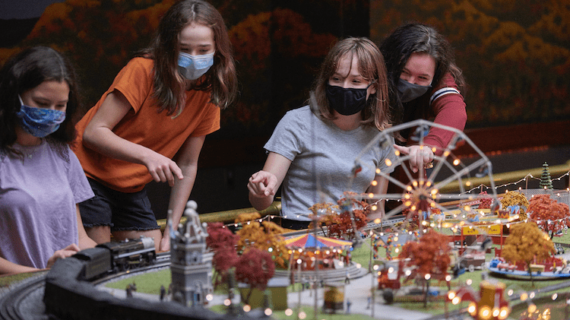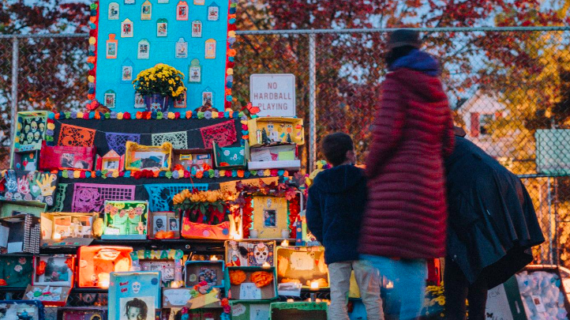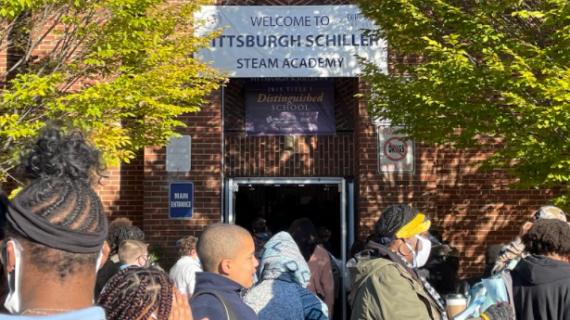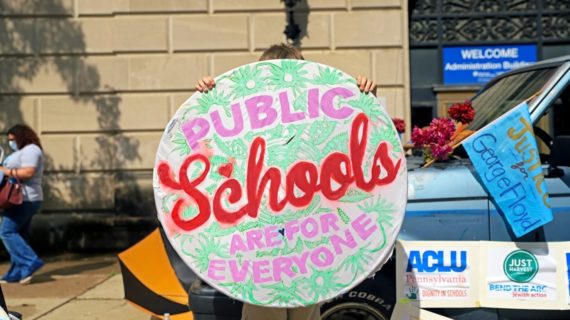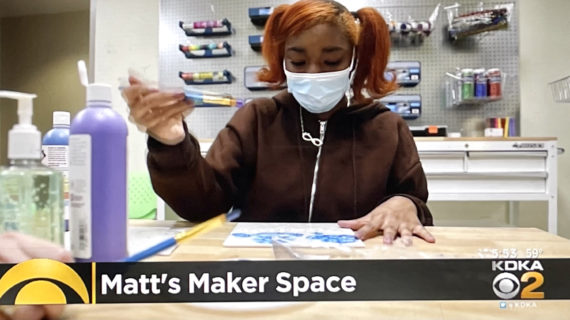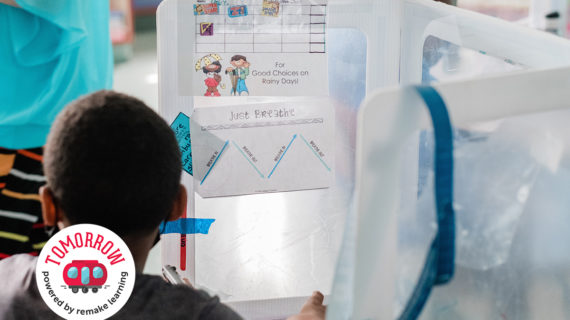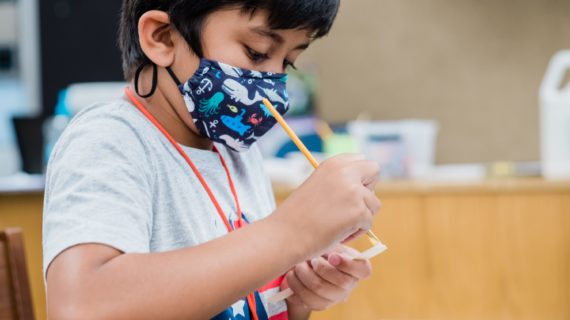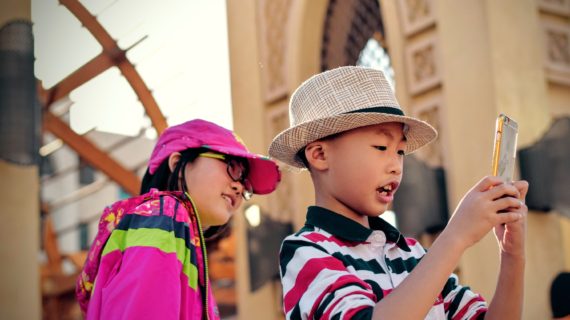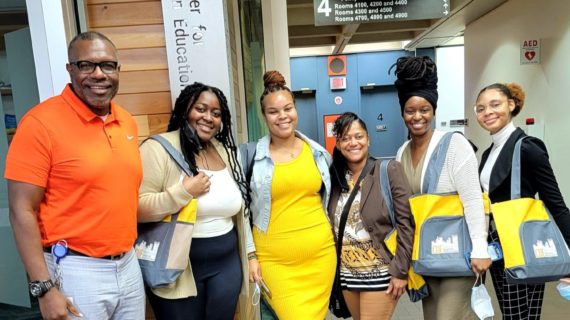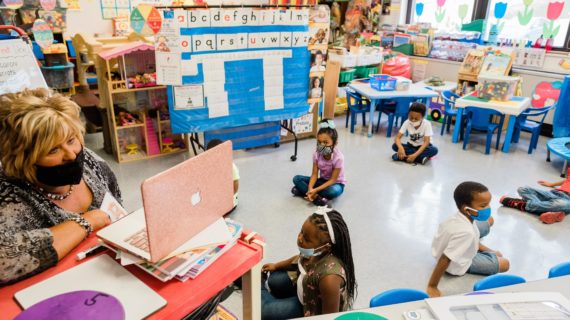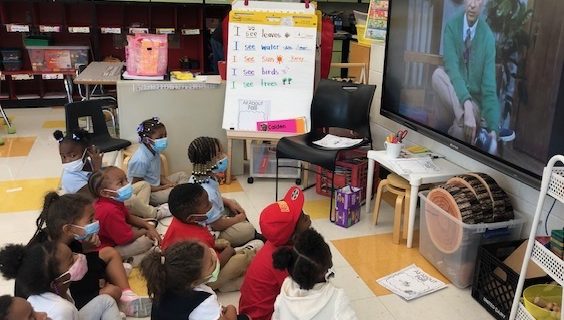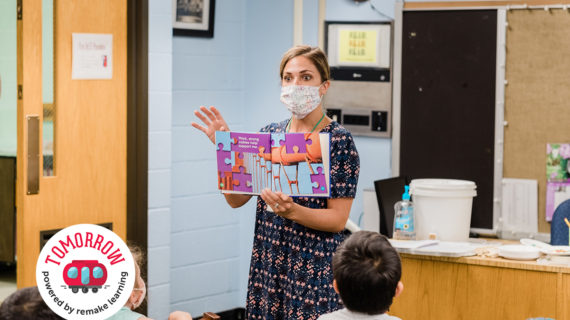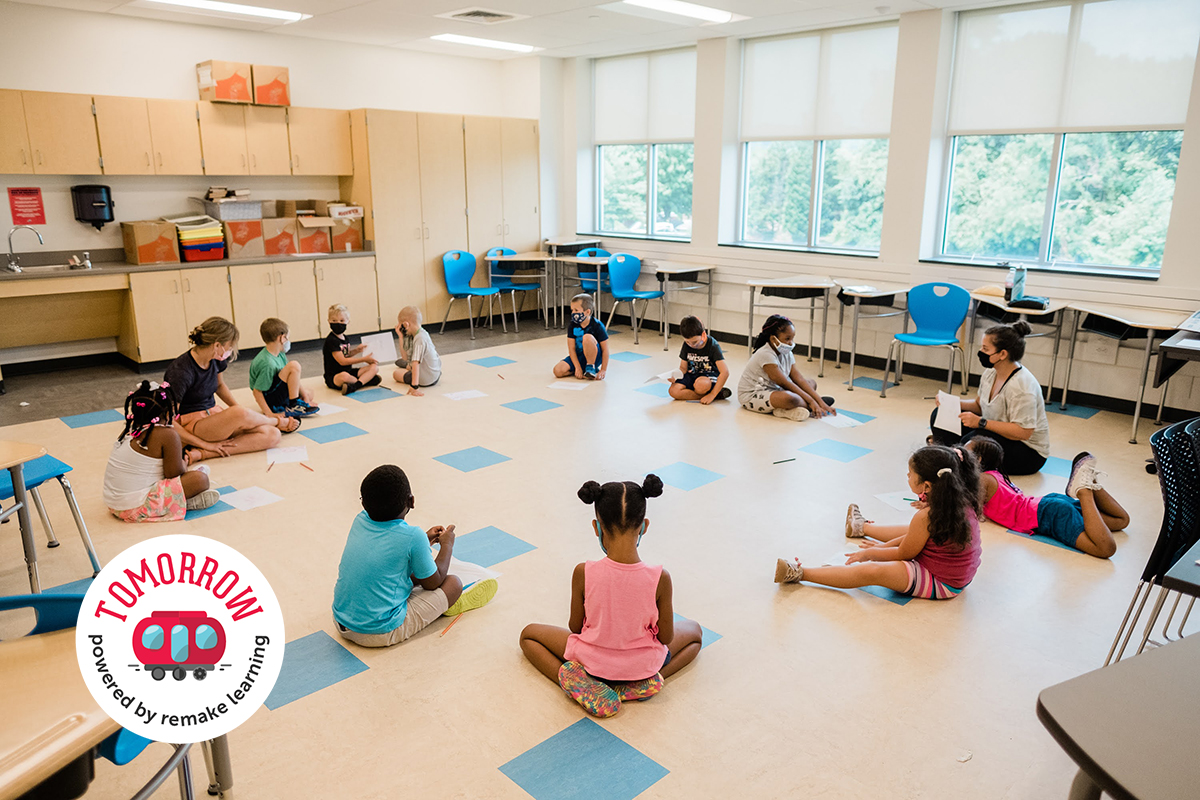
If kids designed their own school, what might it look like? Blueprint for Learning grants are showing us.
When teacher Michael MacConnell heard about the Blueprint for Learning grant program in the spring of 2019, his imagination kicked in immediately. Walking through the halls of Riverview High School in Verona, Pa., he wondered: If Pittsburgh area foundations were giving $800,000 toward the design of innovative learning spaces, what kind of space could he dream up for his district?
It was MacConnell’s second year at Riverview. Along with teaching life skills classes, he’d stepped in as sponsor for the school’s Key Club—a group that’s all about service to others. A new slate of officers had just begun leading this student-run club, and they were seeking a project to tackle.
That’s when it hit MacConnell: He’d considered pursuing the grant on his own, “but I said, ‘Wait. Key Club is all about service. So why aren’t we doing this as an organization? And what better way to teach students service skills, but then also grant writing, collaboration and networking skills, than by doing it through a grant?”
He laid out for the officers what he knew about the Blueprint for Learning initiative: K-12 schools, out-of-school-time providers and other learning organizations were invited to attend a two-day Space Design Summit co-hosted by Remake Learning and Reimagine America’s Schools, an initiative of the National Design Alliance. At the summit, they would collaborate with leading architects and designers from around the country to discuss effective learning space design and the connection between educational spaces and a school’s vision for learning.
Then 16 proposals would be chosen from among all those who applied. Each of those winning organizations would be given support from architects and designers and $50,000 from the Grable, Benedum and Hillman foundations to make their redesigned space a reality.
“I asked the officers if it was something they wanted to do and they said, ‘Sure,’” MacConnell remembers. “We attended the brainstorming sessions in the summer and then they absolutely wanted to do it.”
Finding Their Voices
Increasingly, students are consulted at some point during the planning process for spaces where they will learn. But it remains uncommon for a learning space to be designed with really meaningful input from those who will use it—especially if they’re children, says Kerry Leonard, director of architecture at Reimagine America’s Schools, who worked closely with the Blueprint grantees.
MacConnell and his students knew that the best learning spaces are designed with all stakeholders at the table—including students. And they were excited to discover that while the vast majority of those attending the Blueprint summit were adults, they were welcomed as potential grant applicants.
The three high schoolers left the summit determined to design a grant-winning project. They decided to focus on creating a new space for the elementary school in their small district. Verner Elementary is a Title One school, MacConnell says. The majority of students get free or reduced lunch.
What if these high schoolers designed a STEM lab for the kids at Verner, and they created an afterschool STEM learning club to get the elementary schoolers excited about math and science?
Fired up about this idea, these rising high school seniors spent the summer of 2019 deep in the process of grant proposal writing.
Leonard says it was an impressive thing to see: “These kids—they’re now in college, but they were high school seniors when they actually did the work. They conceived of the project themselves. They applied for the grants themselves.”
And once they got word that they’d been awarded a Blueprint for Learning grant, he says, “then they really led the design effort.”
Listening to the Learners
These teens had been respected as stakeholders with valuable input about learning spaces. They’d even had another Blueprint grant recipient, Allegheny Valley School District, ask for their insight on student-designed spaces.
Now it was time to include the voices of all stakeholders—including the elementary schoolers who would use the STEM lab at Verner—in their planning process.
They invited the youngest kids—kindergarten through 2nd grade—to draw pictures of their ideal learning space. And they sent a survey to 3rd- through 6th-grade students, asking all about the ideal learning space they would design.
“They broke it down,” MacConnell says. “What kinds of colors do you like for learning? What kind of surfaces? What would you want to study in there?”
Based on the data from students, they created a survey to gather input from teachers. They also invited the school’s STEM teacher to weigh in, and consulted a parent from the PTO who had several children at Verner.
For Ron Bogle, who leads the Reimagine America’s Schools initiative and helped run the Blueprint design summit, it was wonderful to see high schoolers bring so much creativity and effort to creating a space for elementary learners.
“The leadership of Reimagine America’s Schools has worked with schools and communities nationwide and has never participated in an education initiative this imaginative and bold,” says Bogle. “We are excited to have been a part of the Blueprint for Learning project, as it has demonstrated the power of design to support transformative change in education.”
Opening New Doors
The Riverview team’s final designs yielded a colorful, flexible space where all kinds of STEM learning can happen at Verner Elementary.
The pandemic unavoidably slowed the project down and the room still isn’t used to its full capacity in order to allow for social distancing. But Leonard says the space already stands as a testament to what can be accomplished when all stakeholders have a true voice in the design process.
Last week during the EDspaces conference in Pittsburgh, Leonard and Bogle were among the co-chairs of a workshop on designing spaces for active learning. They invited MacConnell and his former students—one of whom is now studying architecture and design at Chatham University—to speak at the workshop.
As the team from Riverview explained the meaningful role that kids as young as 5 and 6 played in their design process, and the Riverview teenagers spoke about the design work they had done, Leonard was struck by a comment that MacConnell made.
“He said, ‘These kids are everywhere in every school. We just have to ask them.”
It’s a message he hopes educators hear, he says, because it’s vital that we “take the time and listen and engage them in the process. This is about them. It’s about their future.”
“People go into communities to do work all the time, and they don’t necessarily engage the voices of the people that are most affected by the work they’re doing,” Leonard says.
Creating better learning spaces for underserved students is incredibly important. But “if they’re not brought to the table, it’s not an authentic process. It’s what we should be doing, and we need to work harder at it.”
Tomorrow Campaign stories dive deeply into the many facets of learning innovation. As we do, we invite you to share your hopes for today’s young people via social media using the hashtag #RemakeTomorrow, and tagging @RemakeLearning.
